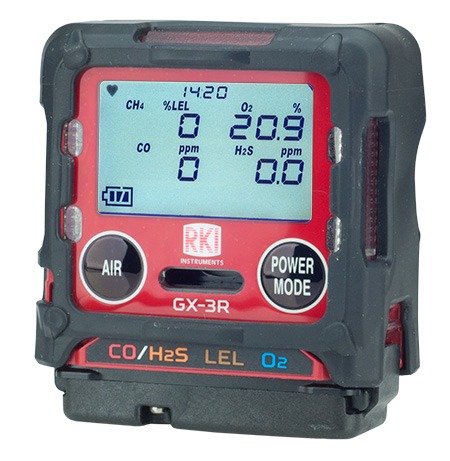
Understanding these LEL gas readings is crucial when it comes to preventing injury and death on the job. If the monitor detects methane that makes up 2.5% of the overall atmosphere, the meter reads as 50% LEL, which means the gas is halfway to reaching its lower explosive limit.

For example, methane comes with an LEL of 5%. A reading of 100% means the gas has reached its LEL. The monitor reads the amount of gas based on how much is needed for it to ignite, usually expressed as %Vol.Ī reading of 0% Volume means there is no gas detected in the air. Every gas comes with its own LEL and UEL based on how much is in the air. Some monitors also read the upper explosive limit (UEL), which is the maximum level a gas needs to ignite. LELs are the lowest concentration of a gas or vapor in air that can combust if an ignition source like a flame or heat is present. What LELs does a 4 gas monitor read?Īside from 4 gas monitors assessing the presence of main gasses which include oxygen, carbon monoxide, hydrogen sulfide, they also detect lower explosive levels (LELs) of flammable, combustible gasses. These gases are heavier than air, so they also sink to the bottom of the atmosphere.Ĭhoose a multi-gas monitor based on your specific needs and the risks of the job at hand. When these fumes are inhaled, they can cause an inflammatory reaction in the respiratory tract.

Irritant Gases: Some monitors may be used to measure the levels of irritant gases, usually ammonia or chlorine, that can cause respiratory issues such as bronchitis or bronchiolitis. This gas is also extremely flammable, which often poses a bigger risk. Methane: Methane is considered relatively nontoxic but high levels will reduce the amount of oxygen in the air, which makes it difficult to breathe, especially if the person has a respiratory condition such as asthma. These monitors can also be used to detect a range of harmful substances and gases that may be present in the workplace, such as: The Occupational Safety and Health Administration (OSHA) mandates that all oxygen gas detection instruments trigger an alarm when oxygen level drops below 19.5% volume. Monitoring oxygen levels can help prevent injury and death on the job. Every worker needs access to oxygen to breathe. Oxygen: Most 4-gas monitors will also monitor the level of oxygen in the atmosphere.

Exposure to H2S can lead to nausea, headaches, confusion, fainting, and even death. It is considered highly flammable and toxic. It is heavier than air, which causes it to sink to low-lying areas. It is common in the wastewater, natural gas, and oil refining industries. Though your sense of smell is extremely unreliable as an indicator of concentration.

Hydrogen Sulfide: H2S is a colorless gas that often smells like rotten eggs, which is why it’s often referred to as sewer gas. In severe cases, it can lead to fainting and even death. Prolonged exposure or exposure to large quantities can result in a variety of symptoms, including dizziness, fatigue, nausea, vomiting, and chest pain. It can also come from stoves, grills, generators, and furnaces. It is most often found in the exhaust fumes of combustion vehicles, including cars, trucks, and other industrial equipment. The most common of which include:Ĭarbon Monoxide: CO is an odorless, colorless gas that can be fatal in large quantities. These devices can be used to detect a range of harmful substances. Multi-gas detectors, which include 4-gas detectors, are designed to detect the amount of various harmful gases in the air as well as the supply of oxygen to make sure workers can breathe safely on the job. Which gas can a multi-gas detector detect?


 0 kommentar(er)
0 kommentar(er)
